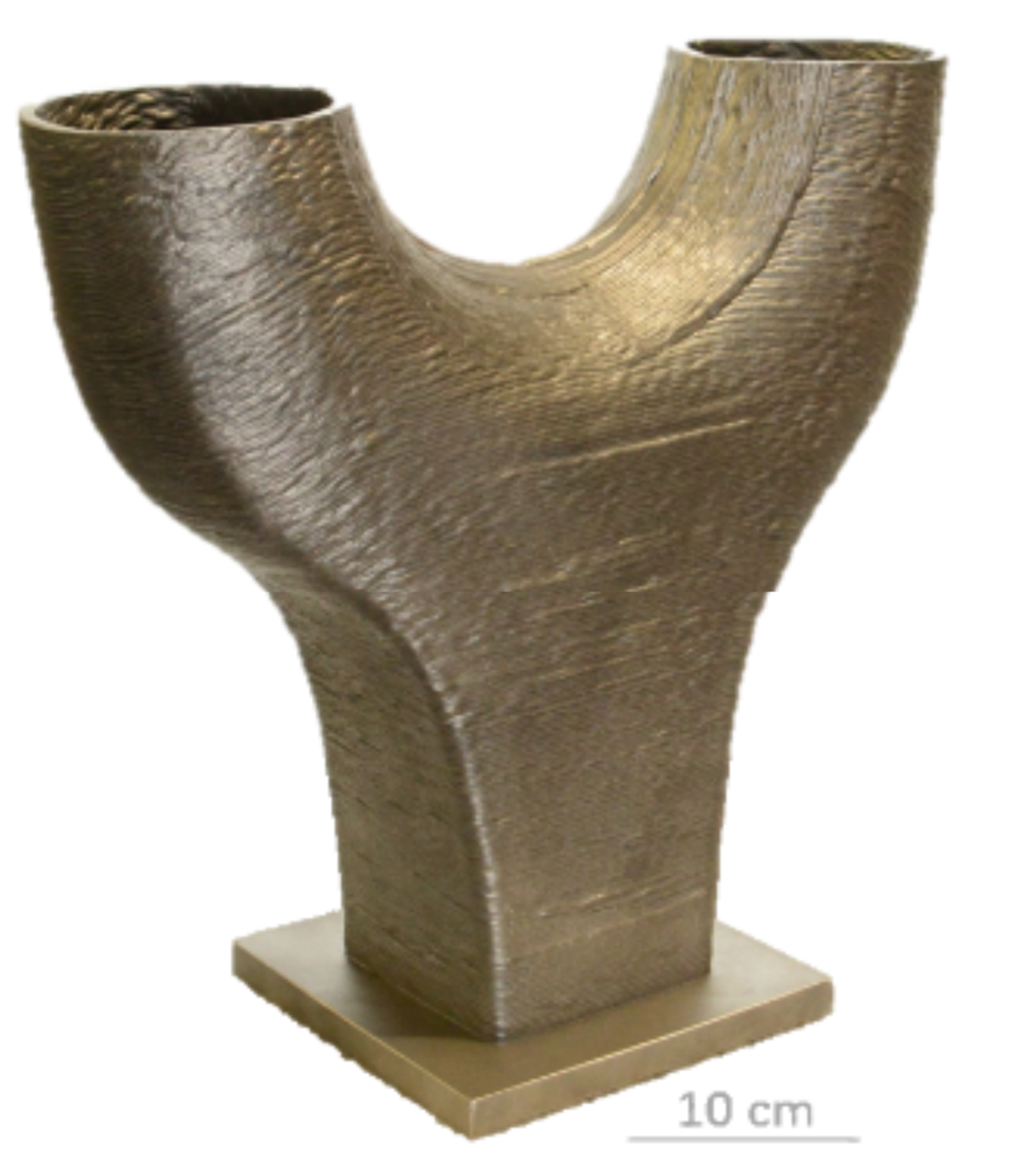Research Summary Report of A07
Wire Arc Additive Manufacturing (WAAM) of High Strength and Individualized Steel Components
[05.04.2024]
Jurke, Florian; Research Assistant, florian.jurke@mb.tu-chemnitz.de
Kevin Hoefer, Research Assistant,
kevin.hoefer@mb.tu-chemnitz.de
Hensel, Jonas; Project Leader,
jonas.hensel@mb.tu-chemnitz.de
Main Goal
A07 focuses on understanding the interaction between DED-arc components and existing structures, developing load-specific strengthening solutions and designing welding strategies. A design framework will incorporate manufacturing constraints and optimization tools for efficient structural components. Additionally, online-process control will be implemented to compensate deviations in component geometry and temperature within the process, using a “Learning-by-Printing” approach. Overall, the project seeks to advance DED-arc application in construction by improving efficiency, reducing material usage and enhancing structural performance.
Summary
Before Johanna Müller left from the TRR after four years, she constructed a Y-node using DED-Arc as the final demonstrator for the initial funding period.
The process of constructing the Y-node highlighted the challenges encountered in slicing and manufacturing strategies. It is noted that geometric freedom results in increased complexity in path planning and manufacturing, emphasizing the importance of considering manufacturing constraints early in the design process. To uphold precision and minimize deviations from the intended geometry during manufacturing, the recommendation is to incorporate online geometry scans, adaptive path planning and an in-situ regulation of seam width and height for large-scale components.
Current state of research
To realize an adaptive path planning, controlling the seam width and height and respond on and unforeseen events a comprehensive process monitoring is required. For this purpose, the DED-arc setup has been equipped with a thermal camera, an industrial camera and a multifunction data acquisition device. The data acquisition is started by a trigger signal and records electrical process parameters on two channels, while controlling the image acquisition of the industrial camera via a pulsed counter output. In addition to adaptive process control, a digital twin can be created using temporally and spatially resolved data. Furthermore, the recorded process data serve as the basis for a sustainability analysis, which will be conducted in collaboration with the project C09.








